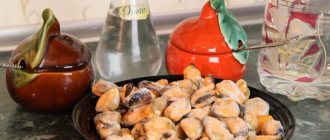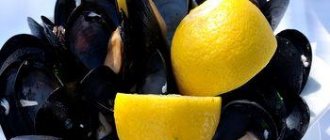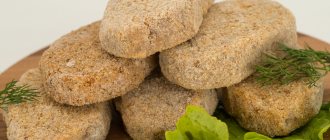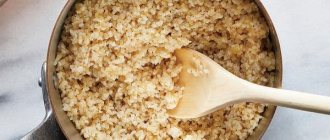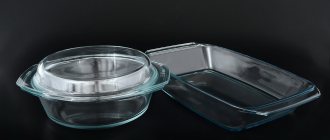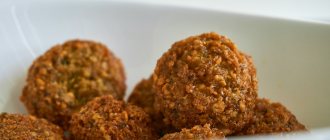Bivalve mollusks, mussels, are an exquisite delicacy, an essential component of most healthy lifestyle diets.
On Russian shelves you can find chilled fresh edible shell rock, frozen in shells and without shells, and pre-prepared preservation. Most commercial conditions of this seafood do not require cleaning, but there are positions that require simple preparatory procedures. Adding mussels to your diet?
- Yes 85%, 454 votes
454 votes 85%454 votes - 85% of all votes
- No 15%, 79 votes
79 votes 15%
79 votes - 15% of all votes
Total votes: 533
09.10.2019
- Yes 85%, 454 votes
454 votes 85%454 votes - 85% of all votes
- No 15%, 79 votes
79 votes 15%
79 votes - 15% of all votes
Total votes: 533
09.10.2019
×
You or from your IP have already voted.
How to properly clean mussels before cooking is a pressing problem: technological errors or the slightest negligence will ruin the gastronomic holiday (deteriorate the taste and aroma), and deprive the pleasure of the meal. Let's look at the problem in more detail.
Selection of quality products
Mussels are bivalve mollusks that live in fresh waters. To prepare a delicious delicacy, the product must be of good quality and fresh. Therefore, it is necessary to consider tips on how to choose quality products:
- Frozen products should not have cracks or deformations. There should also be no frost visible. If such defects are present, we can conclude that the seafood product was previously defrosted. In such a situation, beneficial properties are lost.
- Cleaned frozen marine fauna should always be light in color.
Yandex pictures - To make the meat more juicy, nutritious and tasty, you need to choose large individuals. On packaging of well-known brands and quality products, two numbers are always indicated separated by a fraction. They indicate the quantity of mussels is 1 kg. The fewer pieces in the package, the larger the individuals will be.
- Shellfish are natural water filters in nature. Marine representatives can filter up to 7 liters per day. If they are grown in dirty areas, they can accumulate large amounts of harmful substances. Therefore, it is necessary to buy products only from reliable suppliers. If mussels are bought by weight, you will need to request a quality certificate from the seller.
Yandex pictures
From 1 kg of unrefined product there are 100 g of purified product.
Step-by-step preparation
- Defrost the mussels, rinse them under cold water and cook in a small saucepan for about 15 minutes.
- We clean the onion from the husk and top layer.
- Cut it into thin half rings.
- Heat a frying pan, add a little vegetable oil and fry the onion half rings until golden brown.
- Pour the mussels into the pan, add spices and fry for five minutes.
- Place the dish on a plate and sprinkle with chopped dill.
You learned how to clean frozen mussels without the shell and how to cook them. It is best to use spicy tomato, garlic or sour cream as a sauce.
How to clean mussels
In stores you can find a large number of products, both with shells and peeled, frozen, and canned. But as practice shows, frozen seafood is most often chosen. Cleansing does not take much time and is not difficult. But there are some nuances that you need to know about. This will prevent spoiling the taste of the seafood.
Although the process itself is simple, beginners should practice first. You can start the practice with both frozen and fresh mussels. Each specific case has its own cleaning and processing methods.
Yandex pictures
Points to pay attention to:
- The first step is to determine the commercial type of seafood. Pay attention to the smell, presence of debris and mucus. Garbage refers to growths, sand and algae. Once the best specimens have been selected, cleaning can begin. You can clean it both in a professional kitchen and at home. There is no need for special skills or tools. The benefits can only be obtained if cleaning rules are followed.
- If fresh products are used to prepare the delicacy, then only live specimens are taken. To check the quality of the product, you need to press on the soft body. If a representative of the marine fauna is fresh, then the valves close.
- Experts point out that shells with deformations, growths and cracks should be discarded. Such mussels may not be fresh and often cause poisoning.
When considering how to clean delicious mussels frozen without a shell, you must follow a number of rules:
- The shell must be opened completely and the mussel leg removed. This is a tough part of the body. It is practically not chewed and is not used for preparing other dishes. After removing it, the remnants are easily removed with a tablespoon.
- In case of baking on the sash, you need to wash the insides from other parts of the body and intestines. In this case, it is convenient to use a special knife.
- After cleaning, it must be rinsed under water to remove unnecessary particles.
- The last step is to prepare the shellfish according to the chosen recipe.
There are many cooking recipes. But it is very important to choose the right dressing for seafood.
Without a shell from the entrails
More than half of all shellfish supplied to stores and markets is shellfish. It is pre-processed at the stage of catching and sorting. More often, mussels of this type are sent completely cleaned or on one shell. But don’t rush to eat it right away. It is recommended to carefully inspect each specimen and perform additional cleaning:
- The shell must be opened completely, and the hard part of the body (“leg”) must be removed. It is difficult to chew and is not suitable for other dishes. You can watch the video on how to find and cut out the leg. The remains of the leg can be easily scraped off with a tablespoon;
- To bake on the flap, it is necessary to thoroughly rinse the insides from excess body parts, intestines above the leg. It is convenient to use a special knife for work;
- After cleaning, rinse well with running water, washing off all unnecessary parts. Everything inside needs to be cleaned properly;
- Prepare mussels according to the chosen recipe.
Cleaning mussels with shell
You can also find peeled mussels in stores. Therefore, it is worth considering how to properly clean delicious shelled mussels. These clams in the shell can be successfully prepared at home. But first of all, familiarize yourself with the nuances of cleaning:
- If you buy frozen specimens in the shell, then the first step is to remove growths, algae and sand. To do this, rinse the mussels under water. To speed up the process, add corn flour to the water.
- Place the mussels in a container, add water and leave to settle. Thanks to this, solid particles will settle to the bottom. Let the seafood stand for half an hour. After this time, carefully remove them and, without shaking the water, clean them with a stiff brush. In this case, the shells should not float to the surface of the water.
- The next step is to remove the byssus. This concept refers to the place where the shell is attached to the bottom. For this, special tweezers are used. If they are not there, then it is not scary. You can work by hand to clean the sink.
- Then rinse again and cook according to the chosen recipe. You don't have to cut them up, as removal can be difficult.
You should only buy from trusted sellers.
Homemade recipes
This type of seafood is prepared in various ways: in the microwave, in a slow cooker, on the stove. They are fried, baked, boiled and pickled. Heat treatment does not exceed 3−5 minutes. To get rid of the fishy smell, you need to sprinkle the product with freshly squeezed lemon juice.
Fried Clams with Onions and Garlic
This appetizer can be served with a side dish or as a separate dish. Ingredients:
- 800 g mussels;
- 2 onions;
- 70 g butter;
- several cloves of garlic;
- black pepper and salt to taste.
Heat a saucepan, add butter, then add seafood. Then add chopped onion and mix thoroughly. When this mixture is fried, you need to pepper it, add salt and add grated garlic. All this needs to be mixed well, then removed from the heat, cover with a lid and leave for 3 minutes.
Frozen product processing
Processing frozen specimens is not at all difficult, but it is important to follow a number of recommendations. They will help preserve the aroma, taste, and soft density of the product itself. The easiest option is to naturally defrost the mussels. To do this, place the product on the bottom shelf of the refrigerator until completely defrosted.
If you need to prepare a dish as soon as possible, then in this case take a container, pour water into it, add salt and lower the mussels. Leave the product for several hours at room temperature. Over time the shells will be ready to cook. But experts say that it is precisely with gradual defrosting that the quality and taste of the product can be prevented from deteriorating.
Yandex pictures
As soon as the mussels are multiplied, the shells are removed, washed, and cleaned. If the shellfish are dirty and sand needs to be removed, then the seafood should be filled with water and left for 30 minutes. Now it’s clear how to clean mussels without any difficulties.
Whatever recipe you choose for preparing mussels, you need to boil them in boiling water for 5-6 minutes. The shellfish are constantly getting in the way. If cooked for a longer period of time, the flavor will be lost and the meat will become rubbery.
Rules for cleaning seafood
When preparing seafood, you need to know how to clean mussels that are frozen without the shell correctly to avoid unpleasant taste sensations or even poisoning. It is necessary to defrost them. To do this, remove the shellfish from the bag, place it in a deep container and put it in the refrigerator. After the ice has completely melted, they need to be placed in a colander and rinsed thoroughly under high pressure of cold water to get rid of sand.
These seafood are often purchased in shells. This raises the question of how to properly clean mussels. It's easy to do. First you need to defrost the product, put it in cold water, and wash it thoroughly with a brush. Then the shells should be boiled for 15 minutes, cooled and the meat removed from the opened shells. Discard unopened shells.
In order to save money and time, it is better to buy already peeled mussels. The shells contain spoiled shellfish that are unsuitable for consumption .
After the mussels are washed, they should be completely dried by shaking them in a colander, or placed on paper towels. It is very important to know that shells that have opened or have damaged shells should not be eaten .
Useful properties of mussels
Mussels are the strongest natural antioxidant and aphrodisiac. Meat helps strengthen the immune system. They contain:
- polyunsaturated fatty acids, which have a positive effect on visual acuity and brain function;
- vitamins;
- zinc;
- amino acids.
Tryptophan, which is contained in the composition, promotes the production of the hormone of joy. The protein is superior to fish and meat proteins in methionine content. Also, eating meat has a good effect on the health of hair, epidermis and nail plates.
Frozen mussels can be included in the diet of overweight people, as they have very low calorie content. There are 100 kcal per 1 kg of shellfish. The products contain a huge amount of protein and practically no fat. That is why they do not have harmful cholesterol. Mussels are rich in phosphatides, which have a beneficial effect on liver function. Keratin in the composition helps reduce appetite and promotes the production of melanin, and also normalizes the functioning of the adrenal glands, pituitary gland and thyroid gland.
Knowing how to properly clean frozen seafood, as well as how mussels are processed, you can prepare a culinary masterpiece at home. But the main rule is to choose high-quality fresh products. Cleaning mussels itself should not be difficult if you follow the rules.
How should you handle the finished dish?
Extracting meat from a finished product is a real art, and in the absence of appropriate skills, the process of consuming the delicacy can turn into torture. If the menu includes a dish of mussels, then the table should be set with special utensils consisting of tweezers and an oyster fork.
We take the tongs in our left hand, clamp them on the shell, which remains in the plate, and use a fork to carefully remove the meat. It is poured over with sauce and eaten. Used shells are placed on a separate plate. The whole procedure is quite troublesome, but after some time it even begins to provide aesthetic pleasure. The main thing is to act carefully so as not to splash the juice on others.
Processing mussels before cooking is the key to high-quality cleaning of the product, because it is not very pleasant to feel grains of sand on your teeth rather than juicy meat. It is highly not recommended to pre-marinate the product; it will lose its traditional softness and turn into a fragrant but tasteless snack.
We recommend: How to increase the heat transfer of a battery: increasing the temperature during the heating season
We recommend reading the article on how to freeze fresh champignons at home
The best marinated mussels recipes
When all the most delicious recipes for salads and mussel appetizers have been tried, you want something unusual, special, new tastes and sensations. And since mussels are a product that provides an extremely large field for imagination, there are no difficulties with something new. This is how marinated mussels appeared, the beauty of which can be appreciated from the picture.
There are a lot of marinades for this mollusk; here another space has opened up for the imagination of culinary specialists. This article will introduce you to both the simplest and most complex recipes for marinated mussels. This is the only way to appreciate how varied the recipes for marinades for these seafood are.
Choosing fresh shellfish
Let me remind you that we will cook the mussels in the sink, unpeeled.
Yes, of course, you can also make a lot of delicacies from already peeled ones - soups, salads, etc., but live, or at least frozen, shellfish are especially tasty in their shell.
There was no doubt about the freshness of our mussels - here they are, only collected from the sea with our own hands.
But even in this case, you need to look carefully - the shell of a good live mussel is always tightly closed and cannot be opened with your hands.
You can also arrange an additional test in water by filling the raw delicacy completely - the living ones will sink to the bottom, and the empty shells will remain on top.
If you buy, then also pay attention to this sign, even if you buy frozen mussels. It wouldn’t hurt to smell the product you’re purchasing - the smell of seafood is clean and subtle.
The slightest suspicion of a low-quality shellfish is a reason to throw away the shell, since poisoning from stale mussels is very dangerous!
Interesting facts about mussels
They need an aquatic environment to live.
Not far from the coast, on breakwaters, stones, cliffs, and artificial underwater reefs, they form a powerful coastal belt.
They are firmly attached by byssal threads (this is the sponge or “beard” that we remove when processing mussels) to various substrates (solid bases).
Types of mussels:
Korean, edible, Mediterranean, Pacific, Gray.
All of them are excellent biofilters, feeding on the smallest plankton and bacteria, unicellular algae, and the remains of aquatic plants and animals.
During the day, one five- to six-centimeter individual passes through itself 70-80 liters of polluted water and returns it to the sea clean and clarified.
Mussels live in all seas of the world. Places where they are crowded together in entire colonies, often forming druses, are called mussel sea banks. Drusa - from him. Druse - “brush”; This is when mollusks occupy one base and grow together.
A sea bank is a part of the seabed where the depth is much shallower than in neighboring areas.
A mussel bank is a sea shallow where mussels settle in huge numbers. The population density of mollusks on the bank is several hundred individuals per 1 sq. meter.
Italy is washed by five seas - the Adriatic, Ionian, Mediterranean, Tyrrhenian and Ligurian. And everywhere in the shallow waters live all sorts of sea limpets, sea urchins, sea cucumbers and sea dates, small crabs, and oysters. And, of course, mussels, which are very revered on the Apennine Peninsula. Along with oysters, of course.
Here it must be said that mussels are incredibly prolific. A female edible sea mussel can spawn up to 10 million mature eggs in one spawning period.
Mussels become sexually mature at two to three years, live 8-10 years, and have two spawnings during the year. You can imagine how many shells the seabed is covered with!
There are also river, freshwater mussels that differ from sea mussels in the quality and amount of “garbage” that they carry on and in themselves.
Mussels are the oldest inhabitants of the Earth
In Crimea, archaeologists still find large piles of empty doors during excavations.
Based on these accumulations, even an entire period in the history of the peninsula was identified under the name “shell midden culture.”
How to eat mussels in shells: a useful video with tips
At sea, in the company of friends, etiquette rules are of no use. We ate mussels with our hands and a fork - whatever was convenient for us. But in a restaurant you will have to use cutlery. However, there is another option for how to eat mussels correctly. According to the author of the video, this is how it is customary to eat the dietary delicacy in France:
Irina Polyanitsa My name is Irina, I am the owner and admin of the site, as well as the author of most of the recipes and articles. I love to cook simple and healthy delicacies. Certified gym instructor, personal trainer. She completed a course on nutrition and health at Stanford University, Stanford Introduction to Food and Health, as well as a course at Ludwig Maximilian University of Munich (LMU) Nutrition and Lifestyle in Pregnancy (about nutrition and lifestyle during pregnancy).
Features of working with the product
Before handling or even purchasing products, you should familiarize yourself with basic information about the food product. This will help you make the right choice and achieve the optimal result in the end.
- Fresh mussels should only be purchased from July to February. The rest of the time, a product passed off as fresh is usually the result of quick freezing.
- Mussels have a pleasant taste and nutritional value, regardless of the type of processing. You can safely purchase not only live shellfish in tightly closed shells, but also boiled-frozen products with or without shells, vacuum-packed products and even canned food.
In what form is seafood safe for health?
In stores, mussels are sold in the following forms:
- frozen raw without shells (usually sold with one shell);
- frozen boiled without shells;
- canned;
- frozen in shells;
- fresh in shells.
The safest of all options is fresh mussels, which are carefully selected, cleaned and heat-treated at home. Mollusks in reservoirs pass through up to 80 liters of water per day. These are peculiar “filters” that, along with nutrients, absorb toxic ones.
Mussels contain minimal amounts of saxitoxin, a substance that has a neuroparalytic effect. If the reservoir was heavily polluted, then its concentration increases, and such mussels should not be eaten. Therefore, it would be useful to ask where the mollusks were brought from and how safe the ecological situation is in this place. The place of production must be indicated on the label.
Canned mussels do not pose a health hazard (unless the can is bloated and the expiration date has passed). But they must be kept in brine, so the resulting product is over-salted, and the taste of additives and seasonings interrupts the natural taste of the seafood. When buying frozen shellfish without shells, you need to be prepared for the fact that there may be a spoiled mussel among them. When defrosting, it begins to spread the smell of rotting. As a result, you have to throw away the entire package.
Frozen mussels in shells are a more acceptable option, since each mollusk is protected by a dense shell. Stale mussels can be removed immediately without affecting the quality of the remaining shellfish. But spoiled seafood must be selected very carefully: frozen mussels with half-opened mussels and those that have not opened after heat treatment are thrown away without regret.
With Blue Cheese sauce
New Zealand mussels with spicy Blue Cheese sauce are an original appetizer for true gourmets. To prepare it, 3 types of cheese are used, which emphasize the exquisite taste of seafood, making it even more expressive.
- green mussels – 940-960 g;
- mozzarella – 180-220 g;
- Gorgonzola, Roquefort or other blue cheese – 130-160 g;
- Philadelphia, mascarpone or other cream cheese – 130-160 g;
- cream 33% - 140-160 ml.
Rinse seafood under running water, dry with paper towels and place on a baking tray.
Grate all cheeses separately on a fine grater. Mix Gorgonzola with soft cream cheese and cream. Pour the cheese sauce over the laid out seafood and sprinkle with grated mozzarella on top.
Place the baking sheet with kiwi mussels in the oven for 11-13 minutes, preheating it to 210°C. Serve the aromatic appetizer hot.
With Philadelphia cheese
Kiwi mussels baked with light and airy Philadelphia cheese is a light and savory appetizer that will be an excellent addition to a glass of dry white or sparkling wine. Seafood prepared according to this recipe turns out incredibly tender and juicy.
- kiwi mussels – 280-320 g;
- Philadelphia cheese – 630-660 g;
- tobiko (flying fish roe) – 280-320 g.
First of all, defrost the seafood and rinse it. Separate the meat from the shell. Boil water in a small saucepan, throw the mussel meat into the boiling water and simmer for about 2 minutes, then immediately pour it onto a plate.
Pour the shells into boiling water and boil them for 3 minutes. Carefully remove with a slotted spoon and place the meat back into the shell.
Mix Philadelphia cheese with flying fish caviar. If the mass is too thick, add a little liquid sour cream. Apply the resulting sauce to the mussels, trying to fill all the voids in the shell.
Transfer the seafood into a heat-resistant mold and place in the oven preheated to 180°C. The baking time should not exceed 6-7 minutes, since the ingredients are pre-cooked. Garnish the finished dish with lemon slices, fresh herb leaves or tobiko caviar.
The mussel is a bivalve mollusk
The shell is wedge-shaped, up to 20 cm long.
The doors are convex, covered with mother-of-pearl on the inside. The body of the mussel inside the shell is shrouded in a fleshy film - the mantle.
What do you eat in mussels?
The muscle (meat) with the mantle and the liquid enclosed between the valves are edible.
The muscle is the leg of the mussel, which has lost its function as an organ of movement and is in a rudimentary state. At the base of the leg there is the same byssal gland that secretes thin threads - byssus, with which the mollusk is attached to the substrate.
What's healthy about mussels?
- rich in vitamins B and D,
- proteins that are well absorbed;
- contain natural antioxidants, immunostimulants,
- over 30 different microelements in proportions favorable for absorption.
- have medicinal properties, having a positive effect on metabolism, increase the tone of the human body.
Mussels are an extraordinary aphrodisiac. There is evidence that the 18th century hero-lover, Giacomo Casanova, breakfasted on oysters and mussels every morning.
